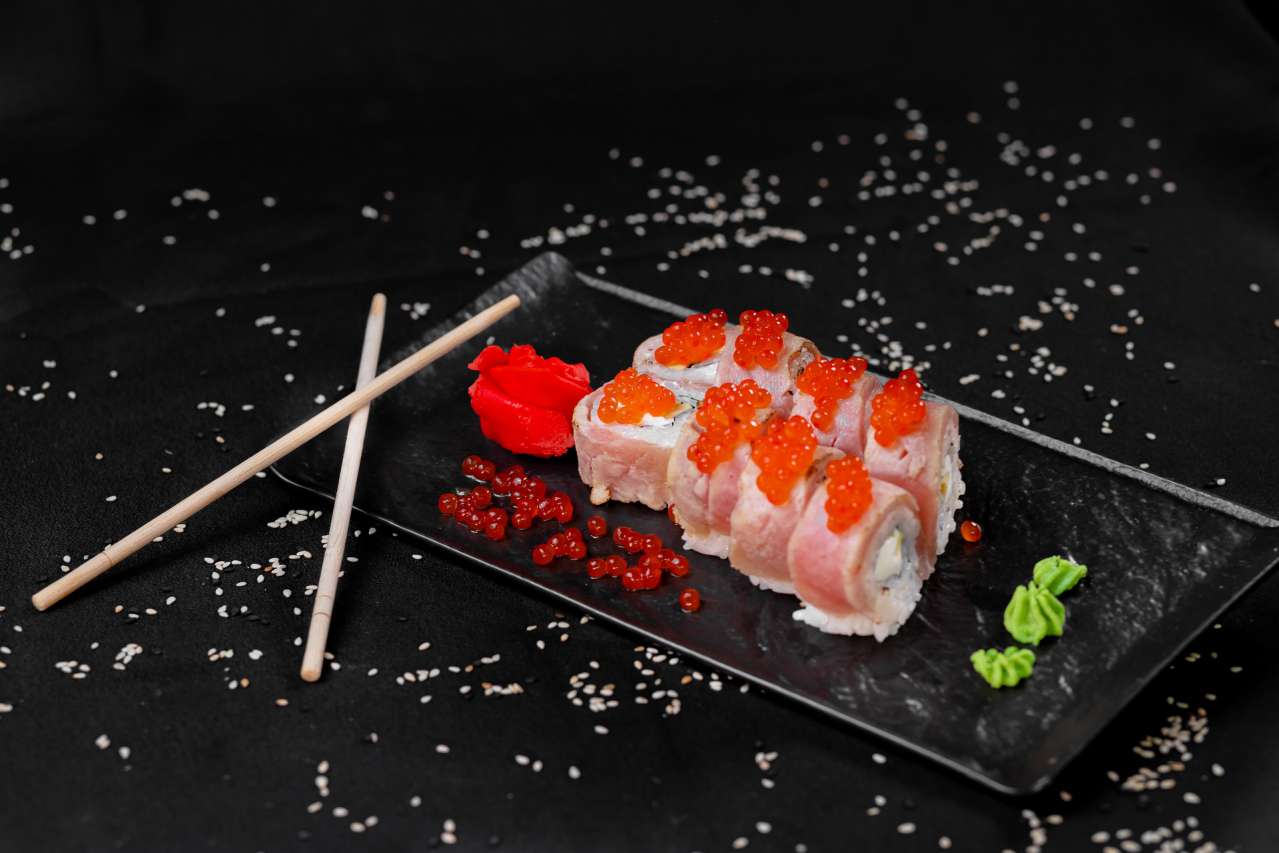Tobiko Caviar: Health Benefits
In general, tobiko is a specific product. In appearance, it resembles capelin caviar, but the taste is different.
It is more juicy and tender, with a slight sweet aftertaste. True, the size of flying fish eggs is just as small, and the eggs also crunch on the teeth.
Tobiko is saturated with all types of vitamin B, as well as vitamins A, D and C.
This caviar is recommended to be used as a general tonic for malnutrition and anemia, during serious physical exertion and even during pregnancy.
Which caviar is better than tobiko or masago
Masago is softer and more tender than tobiko. However, the consistency of tobiko caviar is better for most rolls, as it contains less moisture than masago.

Due to its “sandy” structure, masago retains moisture more strongly from the brine in which it was marinated, which must be taken into account when preparing rolls.
How to test tobiko caviar
You can distinguish mixed caviar if you look closely: eggs should be the same size, and tobiko is larger than masago. In addition, tobiko itself is dense caviar, the grains go one to one.
With taste it is more difficult: here, perhaps, only professionals or gourmets can determine.
How to eat flying fish roe
Flying fish roe (tobiko) is often used in Japan as a health food ingredient. It is also believed to be very beneficial for children, pregnant women and the elderly.
Based on the product, you can make a spread for baguette sandwiches and fresh vegetables.
It will turn out not only useful, but also very tasty.
